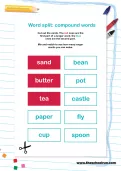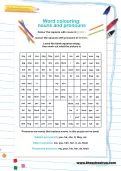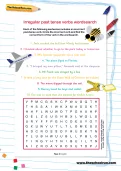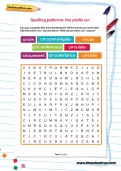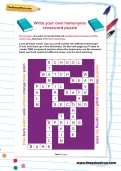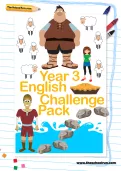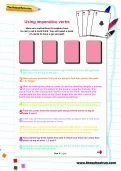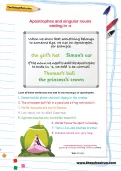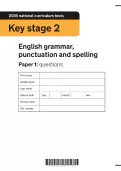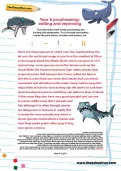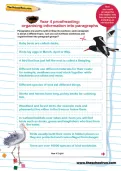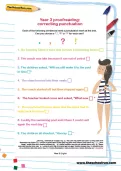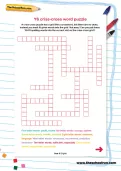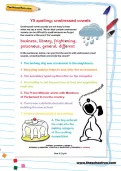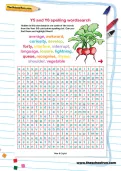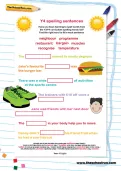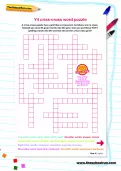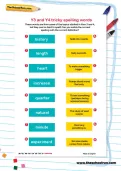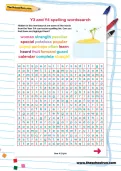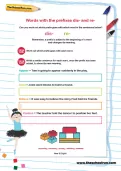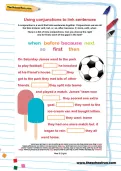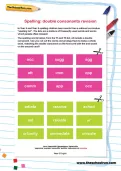Challenging reading comprehensions and activities for Year 3 readers and writers, designed to stretch your child and offer them the opportunity to explore their year-group topics in greater depth.
or
Register to add to your saved resources
Already a subscriber? to view this content.
Learn a card trick to amaze friends and family and practise identifying and using imperative verbs in this Y4 activity worksheet.
or
Register to add to your saved resources
When a noun we want to add an apostrophe to ends in -s we add 's to show possession, according to the national curriculum. Practise the rule by punctuating some sentences.
or
Register to add to your saved resources
Already a subscriber? to view this content.
Help your child prepare for the Year 6 English SATs, taken at the end of Key Stage 2, with some revision and at-home practice. These complete 2018 Y6 SATs past papers are the official past papers from the Department for Education, used in schools.
or
Register to add to your saved resources
This information text needs punctuating and dividing into paragraphs. Try to include punctuation marks like semi colons, brackets and dashes, too.
or
Register to add to your saved resources
Already a subscriber? to view this content.
Billy has written a letter to try to persuade his local council that a new park is needed in the area. The language is very informal. Do you think his letter will be taken seriously? Your task is to keep the ideas in the letter the same but rewrite it using the more appropriate formal language that is needed when writing a persuasive letter to someone you don’t know.
or
Register to add to your saved resources
Already a subscriber? to view this content.
Paragraphs are used to split writing into sections; each paragraph is about a different topic. Can you cut out these sentences and organise them into paragraph groups?
or
Register to add to your saved resources
Already a subscriber? to view this content.
Each of the following sentences need a punctuation mark at the end. Can you choose a “.”, “?” or “!” for each one?
or
Register to add to your saved resources
Already a subscriber? to view this content.
A criss-cross puzzle has a grid like a crossword, but there are no clues; instead you must fit given words into the grid. Not easy! Can you put these Y5/Y6 spelling words into the correct slot on the criss-cross grid?
or
Register to add to your saved resources
Already a subscriber? to view this content.
Can you match up these tricky words to their correct definition? Use a dictionary to check if you’re not sure about their meaning, then use the Look, Cover, Write and Check method to learn to spell them.
or
Register to add to your saved resources
Already a subscriber? to view this content.
In these sentences, can you find the words with unstressed vowel sounds, underline them and circle the sound?
or
Register to add to your saved resources
Already a subscriber? to view this content.
Hidden in this wordsearch are some of the words from the Year 5/6 curriculum spelling list. Can you find them and highlight them?
or
Register to add to your saved resources
Already a subscriber? to view this content.
Have you been learning to spell words from the Y3/Y4 curriculum spelling words list? Find the right word to fit in each sentence.
or
Register to add to your saved resources
Already a subscriber? to view this content.
A criss-cross puzzle has a grid like a crossword, but there are no clues. Instead you must fit given words into the grid. Can you put these Y3/Y4 spelling words into the correct slot on the criss-cross grid?
or
Register to add to your saved resources
In these sentences, look for the words with a spilt digraph. Remember, you are looking for a word with an ‘e’ at the end that changes a short vowel sound into a long vowel sound (for example, mad becomes made).
or
Register to add to your saved resources
Already a subscriber? to view this content.
These words are from some of the topics studied in Year 3 and 4, but they can be hard to spell! Can you match the correct spelling with the correct definition?
or
Register to add to your saved resources
Already a subscriber? to view this content.
Hidden in this wordsearch are some of the words from the Year 3/4 curriculum spelling list. Can you find them and highlight them?
or
Register to add to your saved resources
Already a subscriber? to view this content.
Work out which prefix goes with each word. Then write a similar sentence for each word, once the prefix has been added, to show its new meaning.
or
Register to add to your saved resources
Already a subscriber? to view this content.
A conjunction is a word that links sentences together. Conjunctions we use all the time include: and, but, or, so, after, because, if, since, until, when. Here is a list of time conjunctions. Can you choose the right one to fit into each of the gaps in the text?
or
Register to add to your saved resources
Already a subscriber? to view this content.
The spelling words below, from the Y5 and Y6 list, all include a double consonant. Can you cut out the cards and arrange them to make a whole word, matching the double consonant on the first card with the end sound on the second card?
or
Register to add to your saved resources
Already a subscriber? to view this content.
